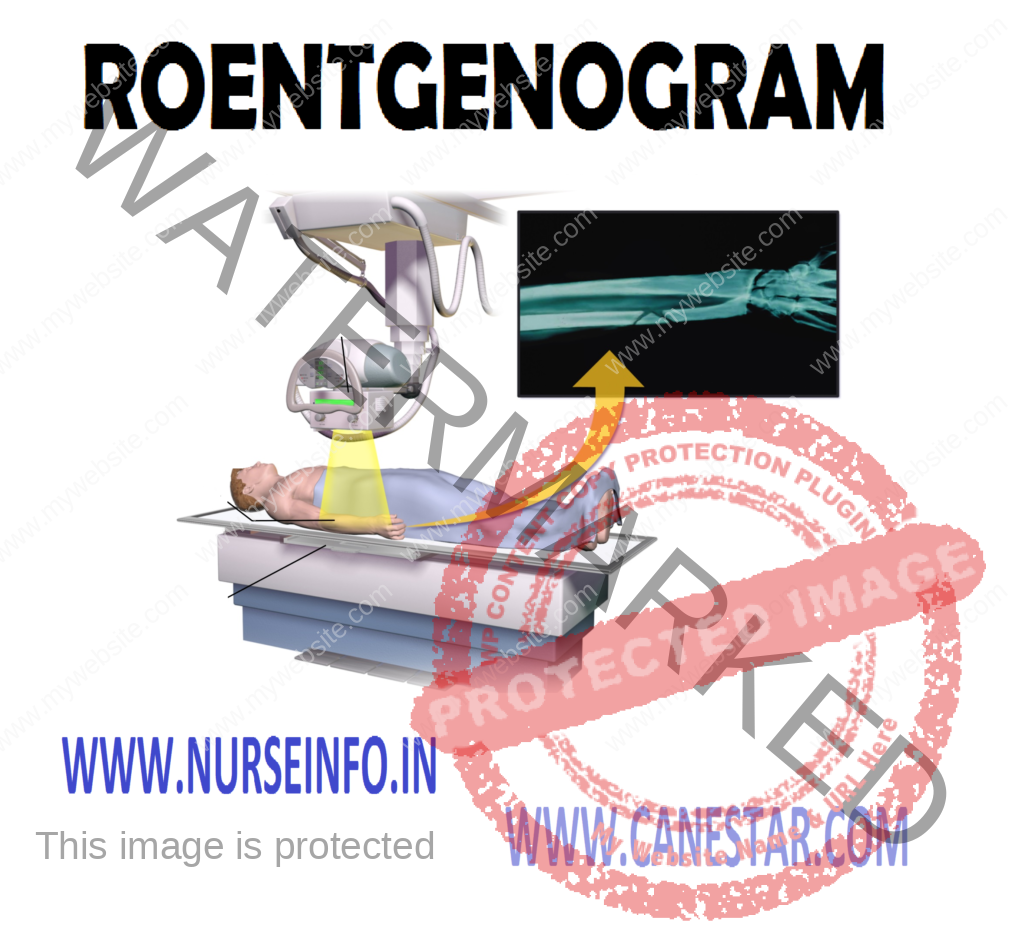ROENTGENOGRAM – Purpose, Indications, Findings, Interfering Factors, Client Preparation, Procedure and After Care (NURSING PROCEDURE)
- A cardiac roentgenogram is a routine screening procedure in clients suspected or known cardiac disorders. It provides information regarding the size of the heart, its shape and location of the cardiac structure and great vessels
- The X-ray may also be used to evaluate pulmonary vasculature and determine the placement of evasive catheter and pacemaker wires
PURPOSE
- Various views of the chest are usually obtained in a cardiac X-ray series. The four views commonly obtained are anterioposterior, lateral, right anterior oblique
- During acute cardiac status, only portable chest X-ray studies are available to evaluate the client’s progress. Because the plate is positioned under the client, an anteroposterior view is obtained
- This film is obtained routinely for hospitalized and preoperative clients to screen for tuberculosis and other serious pulmonary or cardiac diseases
- It also provides a preoperative comparison film for the postoperative clients whom a pulmonary or cardiac complication develops, and it a basic radiological procedure for the clients with a suspected pulmonary disorder
INDICATIONS
- The chest X-ray provides data about the heart including its size and shape
- In congenital and acquired cardiac disease, the enlargement of the heart and its atria or ventricles provides information about the improper function of the cardiac valves, pulmonary or aortic arterial hypertension and venous pulmonary conduction that affect heart size
FINDINGS
- Pneumothorax
- Atelectasis
- Pleural effusion
- Pleurisy
- Cystic fibrosis
- Pulmonary fibrosis
- Tumor or cyst
- Silicosis
INTERFERING FACTORS
- Excessive movement
- Failure to remove jewelry or other metal from the X-ray field
- Improper positioning
CLIENT PREPARATION
- Instruct the client to remove all clothes and put on a hospital gown
- Instruct the client to remove all jewelry and metal objects from the area that is to be imaged
- Provide reassurance to the client. Young children often fear the equipment, strange room, isolation and separation from the parents
PROCEDURE
- Ensure the client’s safety at all times, particularly when there is a risk of the client’s falling
- The radiography table has no side rails. A Velcro waist restraint may be used, but sometimes the restraint interferes with the positioning and imaging needed
- Position the client for the specific views needed
- Instruct the client to remain motionless during the imaging
- Sometimes the client is instructed to inhale deeply and hold the breath until the image is taken
- The client must often wait in the imaging areas as the decision is made concerning whether to take additional X-ray films
- Provide a blanket or extra gown for the client who is chilled in the cool room
AFTER CARE
- Assist the client in dismounting from the radiography table and getting dressed, as needed
- Record the entire procedure in the nurse’s record


